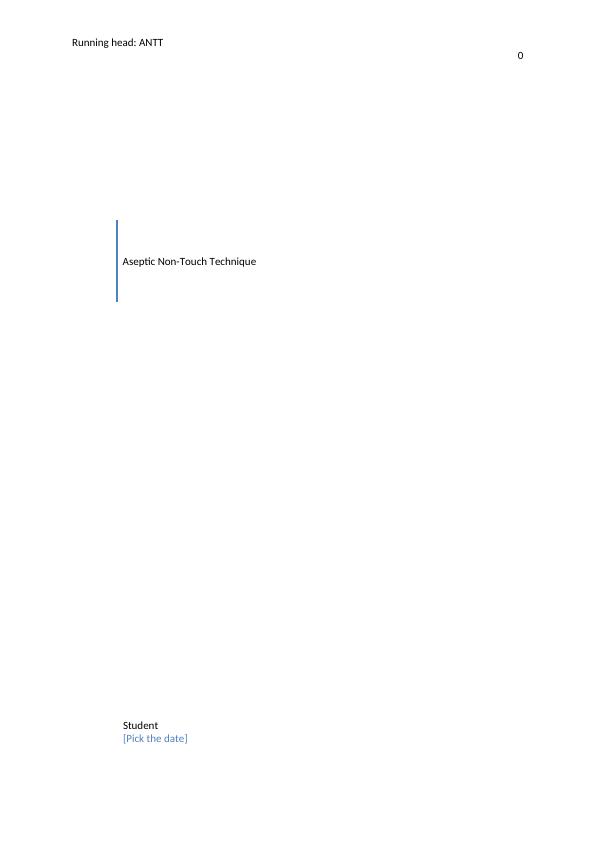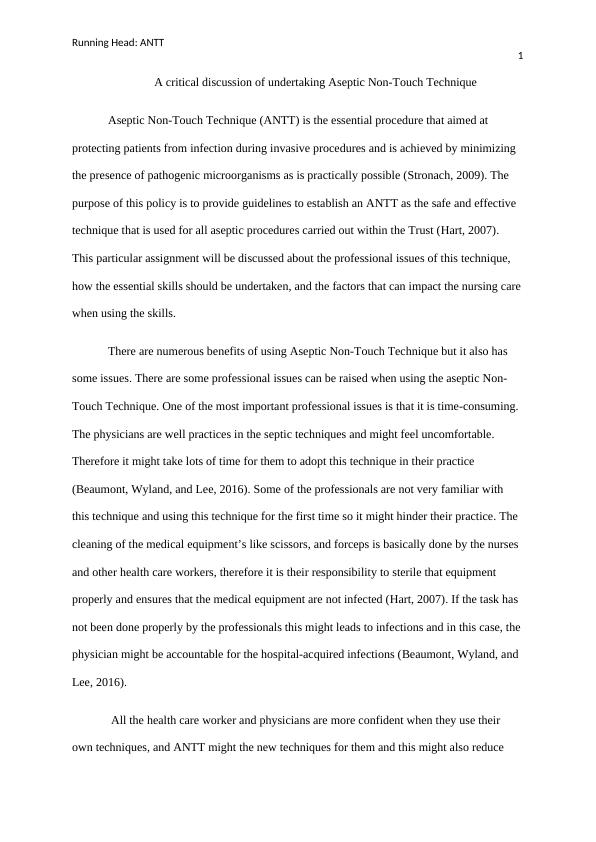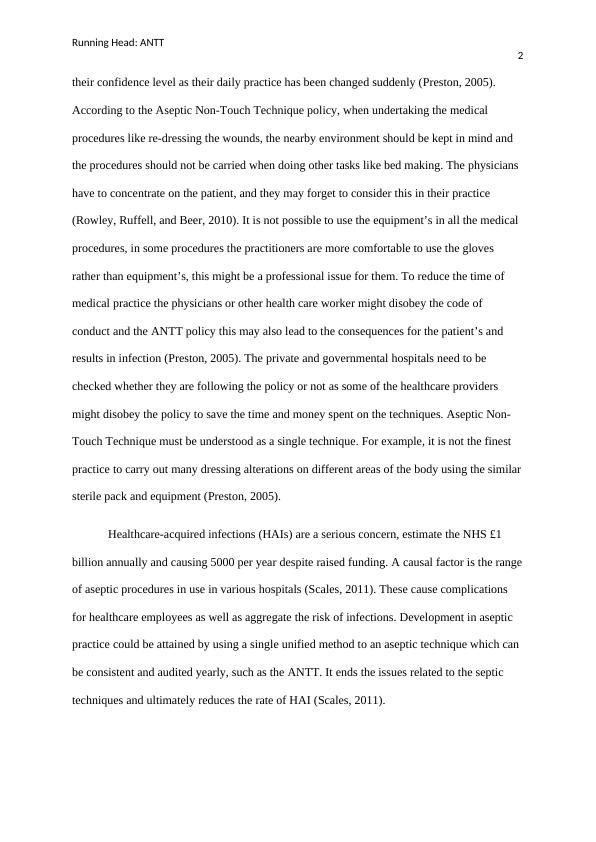A critical discussion of undertaking Aseptic Non-Touch Technique
10 Pages2896 Words428 Views
Added on 2023-05-31
About This Document
This article discusses the professional issues and essential skills required for Aseptic Non-Touch Technique (ANTT) implementation. It covers the ANTT policy, principles, and suggestions for use. It also explores the psychological and cultural factors that impact ANTT implementation.
A critical discussion of undertaking Aseptic Non-Touch Technique
Added on 2023-05-31
ShareRelated Documents
End of preview
Want to access all the pages? Upload your documents or become a member.
Nursing Reflective Essay on Priming an Intravenous Infusion Line
|6
|1467
|405
Aseptic Non Touch Technique for Vascular Access Devices
|12
|2773
|474
Prevention and Management of Central Line Associated Bloodstream Infection (CLABSI)
|9
|2813
|306
Personal and professional assessment.
|5
|1345
|68
Patch Work - Infection Control
|23
|5679
|483
Reflective Cycl and Gibb's Reflective Cycl for Clinical Skill Assessment
|6
|1181
|375



